Sewage
Treatment Plant

Environmental
Education

Solid Waste
Management

Environmental
Risk Management

Urban
Drainage

Rservoir
Water

By caring for the environment and for quality of life in an innovative way, SEMASA is helping build a city that is increasingly sustainable and people-friendly. This is a story that the institution has been writing for 45 years. SEMASA—the Santo André Environmental Sanitation Service (Serviço Municipal de Saneamento Ambiental de Santo André) was founded on November 13, 1969 when the former Department of Water and Sewerage (DAE—Departamento de Água e Esgoto), an agency directly managed by City Hall, was modernized.
The aim was to strengthen and empower the city administration to carry out much-needed improvements by means of an independent and agile organization.
SEMASA has overcome many challenges, particularly budgetary ones, and has extended its sewerage networks way beyond the coverage rates for most Brazilian cities. SEMASA presently follows a pioneering integrated environmental sanitation model that benefits citizens and the environment. SEMASA prioritizes a participatory management model and encourages reflection upon environment-related issues through citizen communication channels. It encourages the community to get involved in its environmental actions through environmental education and mobilization.
SEMASA's environmental sanitation model is innovative in that the offering of water supply, the collection of sewage, management of solid waste, environmental management and environmental risk management by the Civil Defense are all run in an integrated fashion to benefit citizens, quality of life and the environment. This model is a benchmark for all of Brazil and has underpinned the Federal Sanitation Act, Law nº 11,445/2007, which adopted the concept of integrated sanitation. All of SEMASA's services have carried NBR ISO 9001 certification since 2008.
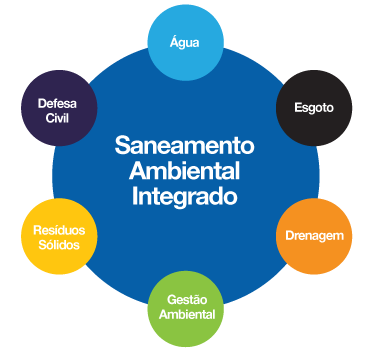
SEMASA boasts international ISO 9001 certification, 2008 version. The agency uses the range of ISO standards as a management instrument in order to continuously improve its provision of service.
Its Quality Management System (Sistema de Gestão da Qualidade—SGQ) was set up in 1994 and the water supply and sewage collection system was certified under NBR 9002/94 in December 1996. SEMASA has incorporated other activities since 1997, and these new processes are also certified.
It was recertified by Fundação Carlos Alberto Vanzolini in 2013, for the sixth time. That year its Quality Management System completed fifteen years.
The Municipal Management and Environmental Sanitation Board, COMUGESAN (Conselho Municipal de Gestão e Saneamento Ambiental) guarantees society's participation in consultations and debates on the major projects that may affect the environment and sanitation at municipal level. COMUGESAN has been linked to SEMASA's Environmental Management Directorate since 1998, after the enactment of Santo André's Municipal Policy for Environmental Sanitation and Management (7,733/1998).
Another way in which society participates is by means of NUDPECS (Civil Defense and Protection Nuclei—Núcleos de Proteção e Defesa Civil), which are linked to the Civil Defense Directorate, responsible for training and orienting citizens living in at-risk areas.
The agency's environmental education projects aim to bring the community on board and sensitize citizens to environmental issues, by engaging schools and neighborhood associations in activities and providing people with information in such spaces as parks.
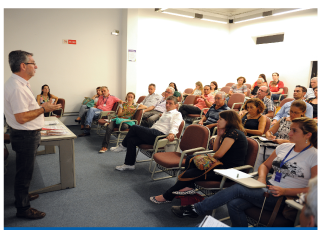
94% of the water consumed in Santo André is bought from SABESP (São Paulo State's Water Utility), which takes it from the Rio Grande and Rio Claro systems, while 6% is produced locally, taken by SEMASA from the spring in the Pedroso Park and piped to the Guarará Water Treatment Plant in the Vila Vitória neighborhood to become potable. Thanks to continuous monitoring by geophones Santo André has one of Brazil's lowest loss rates.

SEMASA has an Integrated Operational Control Center (CECOI) which provides Telemetry and Telecommand services by means of which the city's water distribution and supply system can be monitored on line 24/7.
A command room with a 142 x 94-inch screen gives professionals and visitors an overall view of Telemetry and any works being performed on the water mains and sewerage systems, environmental monitoring, major consumers and also of 'sentinels' (water-pressure measuring devices installed in properties that tend most to suffer from supply disruptions).
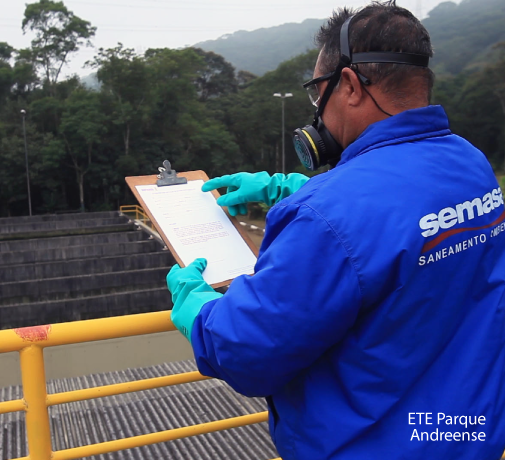
Since 2007 SEMASA has operated the Parque Andreense Sewage Treatment Plant (STP). Sewage produced by some 2,500 inhabitants is treated so that raw sewage does not flow into the Billings Reservoir.
The sewerage network, the domestic connections, and two pumping stations carry the sewage to the STP. The sewage produced by greater Santo André flows to SABESP's ABC Sewage Treatment Plant in São Paulo, on the municipal limit with São Caetano do Sul.
A proportion of the treated sewage becomes gray water for a range of purposes, such as watering gardens, flushing out sewers and washing streets after open-air markets have been held.

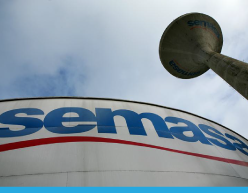
By the end of the current decade SEMASA expects to make basic sanitation universally available. This goal will be attained by a set of investments in network expansions and the interconnection of trunk collectors, as well as the planned construction of the Paranapiacaba Waste Water Treatment Plant.
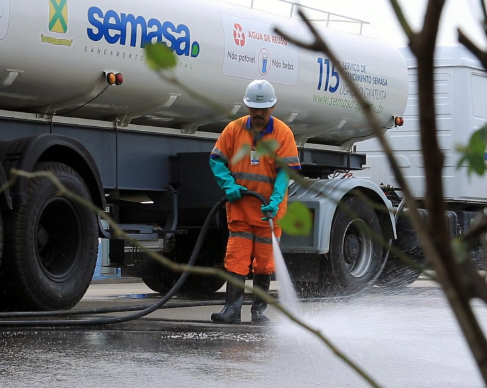
Disasters stem from natural or man-made adverse events in an ecosystem. They cause human, material and environmental damage and lead to economic losses and social harm.
People need to know more about territories and their vulnerabilities, the type of exposure to existing risks and ways of preventing disasters, if this perception is to grow further.
For this reason the Civil Defense of Santo André is part of SEMASA's integrated sanitation structure, working to manage environmental hazards, both in prevention and in emergency response.
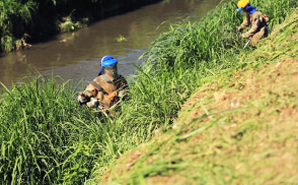
Preventive actions are essential in preventing disasters. They include inspecting construction works, issuing warnings and sealing off buildings in at-risk areas, and flying over at-risk areas to prevent people occupying land liable to suffer mudslides.
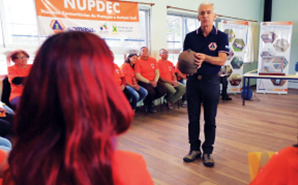
The Civil Defense educates and trains Civil Defense and Protection Nuclei (NUDPECs), providing guidance and training to community members about first aid, prevention of accidents in the home, what to do in the event of floods, landslides, fires and so on.
deslizamentos, incêndios e outros eventos. It also does the same with schools and communities. The nuclei began to be set up in 2001.
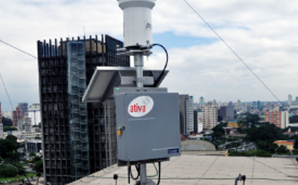
The Civil Defense is also tasked with providing Humanitarian Assistance to stricken communities within the municipality after disasters. They carry this out in partnership with the City Hall Social Work Department.
Disaster management includes humanitarian assistance and provides food, drinking water, clothing and personal hygiene products, among other goods.



One duty of the Civil Defense is to monitor critical events in the city. Continuous monitoring of streams, of large rainwater drainage pools called piscinões, and of climatic variations by cameras and rain gages, enables preventive and emergency measures to be carried out quickly and accurately.
Five meteorological stations measure the rainfall indices, temperature, relative humidity of the air and wind speed.
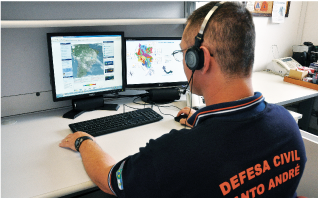
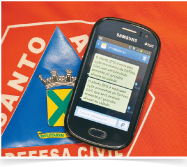
The Civil Defense monitors and sends preventive SMS alerts about climatic events.
SEMASA has been responsible for drainage in Santo André since 1997. The service aims to reduce flood risks and subsequent damage. In addition to works to improve the drainage of rain water, preventive maintenance is carried out on the municipality's macro- and micro-drainage system with an annual schedule of weeding, the removal of earth and debris, and the manual and mechanical cleaning of rivers, streams, rainwater reservoirs and culverts.
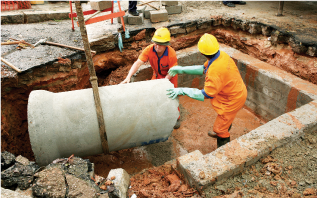
Mechanical cleaning of rivers and reservoirs: 13,500 tonnes of debris is removed annually
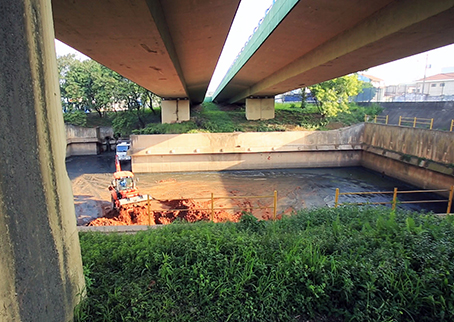
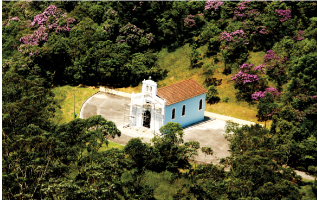
Pedroso Park
SEMASA assumed control of Environmental Management in 1998, after the enactment of Municipal Act 7,733, which gave the agency technical and enforcement responsibility for the municipality's Environmental Management and Sanitation Policy, promoting environmental health by means of inspection in the urban area and in headwaters, permits for economic activities and promotion of environmental education.
55% of Santo Andre's area is made up of the sources of rivers and streams
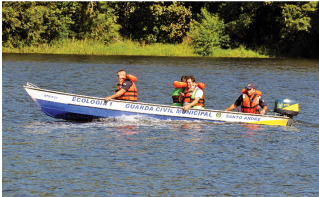
Inspection Craft
Licensing is one among several environmental management instruments created by the National Environmental Policy (Política Nacional do Meio Ambiente), which tasks municipalities with licensing those activities that have a local impact. Municipal Environmental Licensing began in 2002, and is the responsibility of SEMASA and City Hall, through its Department of the Environment, the Paranapiacaba Secretariat for the Management of Environmental Resources, and Parque Andreense.
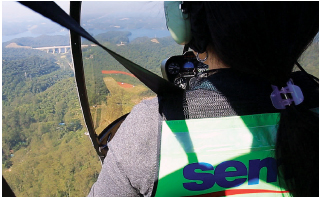
Overflying the headwaters
Environmental Inspection aims to perform preventive and corrective inspection and monitoring of sources of pollution and of projects that might harm or damage the environment, pursuant to legislation currently in force. SEMASA's environmental agents inspect the urban area and the headwaters by land, by air in helicopters, and by boat on the Billings Reservoir. SEMASA controls noise pollution (bars, places of worship and so on), the emission of odors, black smoke and particulate matter in the air.
SEMASA's environmental education projects and activities target all segments and age ranges of society; their main aim is to sensitize the public at large by displaying information on local and global environmental issues. The activities include lectures, workshops, courses and specific projects. Environmental Education support material and information supplements the educational dynamic: this includes primers, videos, folders and games.
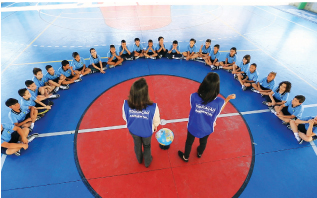
Environmental Education Action
TLaw number 7,733/98 also gave SEMASA responsibility for running the Pedroso Municipal Nature Reserve, which is officially known as a “Conservation Unit under Comprehensive Protection and an Area for the Protection and Recovery of Water Sources within the Billings-Tamanduateí Basin”. A natural corridor that connects with the Serra do Mar State Park, the Pedroso is an uninterrupted stretch of native vegetation of Brazil's Atlantic Coastal Rainforest, or Mata Atlântica, containing rich biodiversity, and making a barrier between the city itself and the waters of the Billings Reservoir, which partially supplies Santo André.
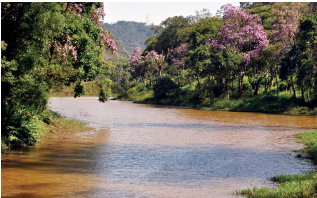
Billings Reservoir and Pedroso Conservation Area
The Pedroso Conservation Unit is six times larger than Ibirapuera Park in the city of São Paulo
Solid Waste Management was placed under SEMASA's responsibility in 1999, when a specific directorate was set up to oversee garbage collection, road sweeping, waste treatment
and disposal in the Municipal Landfill.
Solid Waste Collection comprises household dry and wet waste collection door to door, and manages the city's "Ecopoints" or Collection
Plants.
Manual road and street sweeping covers the entire city but is also carried out mechanically in the busier streets and avenues.
Manual Sweeping:
average 8,000 km/month
Mechanical Sweeping:
over 1,500 km/month
Wet Waste Collection:
230,000 tonnes/year
Dry Waste Collection:
14,000 tonnes/year
Source: DRS/2014
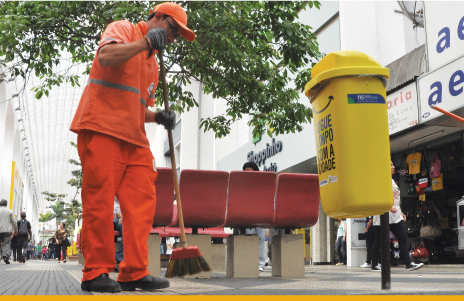
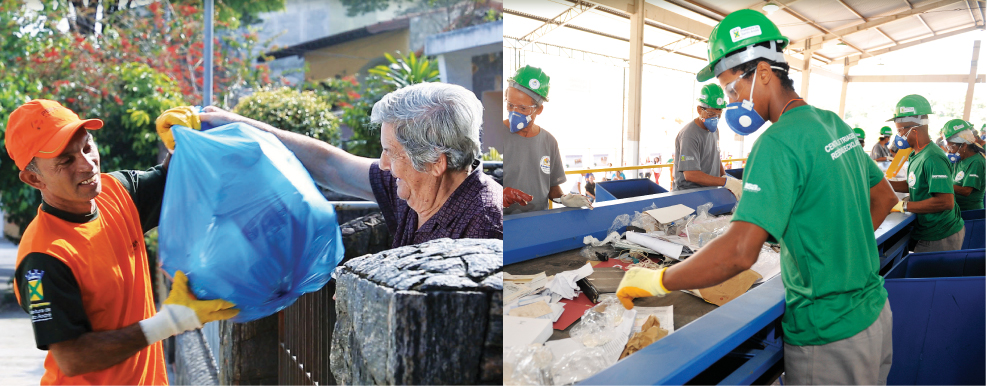
Presorted garbage collection was set up in 1997 in order to relieve the Municipal Landfill, improve the quality of life for the city's inhabitants, and generate employment and income for recycling cooperatives through the sale of recyclable materials. Presorted domestic garbage collection has been in place throughout the city since 2000. The recyclable residues are sorted and sold by two Recycling Cooperatives: Coopcicla and Coop Cidade Limpa.
SEMASA maintains 18 Collection Points in the city to receive dry waste, in addition to its door-to-door collection. These Ecopoints are strategically located to receive recyclable waste, rubble, old furniture, waste from small building works, tires and tree trimmings, batteries from devices and cars, light bulbs, cooking oil and electronic waste.
The Recyclable Waste Triage Central was set up in 2015 in order to improve working conditions and boost members' income for the two Cooperatives that sort the material.
The structure comprises two sheds, in a 10,550 square-foot area, equipped with raised conveyor belts, crushers, electronic scales, forklift trucks and transportation carts.
Cooperativa dos Agentes Autônomos de Reciclagem (Coopcicla): founded in 1999. It arose out of the Santo André Cooperatives Incubator.
Coop Cidade Limpa: set up in 2001 by community scavengers in needy settlements where garbage trucks were unable to gain access
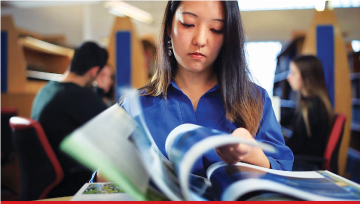
In 2003 SEMASA set up its Environmental Sanitation Reference Center, open to the public, operating in the agency's headquarters. The venue, which is linked to the Social Communication Coordination, continues the work of the former SEMASA Library and is open to people wishing to know more about sanitation and the environment.
The collection houses approximately 15,000 items, and currently meets the needs of internal and external users. It holds books, technical papers, monographs, theses, journals, catalogs, CDs, leaflets and newspapers. The Reference Center also coordinates an activities agenda based on the main celebrations of the environmental calendar.
Reference Center: 15,000 items, including books, videos, technical experiments and academic works
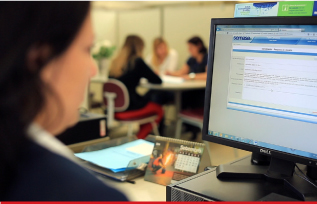
SEMASA has five citizen service stations in the city. There are also telephone lines (115 and 199—the latter only for the Civil Defense), and Fale Conosco, an online hotline at www.semasa.sp.gov.br. The Public Service Central 115 operates 24/7 to take calls for several of SEMASA's services, including queries about being cut off, garbage collection services, road-sweeping services, requests for a second copy of an invoice, and noise complaints.
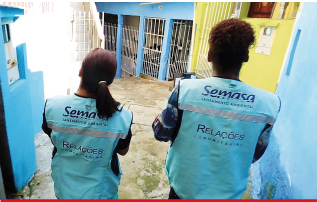
The Community Relations sector deals with the main community representatives, carries out socioeconomic surveys, and also helps to mobilize communities around the cause of environmental education. The area has supported such important City Hall and SEMASA activities as the Integrated Sanitation Program during urbanization work in slums, and the mobilization and training of community agents to publicize the construction of the Municipal Drainage Plan.
Welcome to the service channel. For Urgency / Emergency calls , we suggest contacting the Telephone service 115 (24 hours service). You can send us a message
